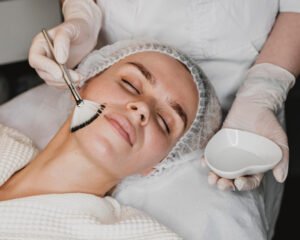Testicular torsion is a medical emergency that every male — and every parent of a boy — should know about. It’s not just another cause of testicular pain; it’s a condition that, if not treated quickly, can result in the permanent loss of a testicle. Let’s break it down clearly and thoroughly so you understand what to watch for, what to do, and how it’s treated.
What Is Testicular Torsion?
Testicular torsion occurs when the spermatic cord — the structure that carries blood to the testicle — twists, cutting off the testicle’s blood supply. Without that blood flow, the tissue in the testicle can begin to die in as little as 6 hours.
This condition can happen at any age, but it’s most common between the ages of 12 and 18. It’s relatively rare, but it’s a true medical emergency that requires immediate attention. The sooner it’s diagnosed and treated, the higher the chances of saving the testicle.
What Causes Testicular Torsion?
The main cause of testicular torsion is a condition called the “bell clapper deformity.” In this congenital condition, the testicle is not properly attached to the scrotum, allowing it to swing and rotate freely — like the clapper inside a bell. This rotation can twist the spermatic cord and cut off the blood supply.
Other potential causes or risk factors include:
- Injury to the testicles or groin area: Trauma can trigger torsion, though it’s not always the case.
- Rapid growth during puberty: This can make the testicle more mobile.
- Sudden movements: Such as vigorous activity, sleep movement, or even turning in bed.
- Cold temperatures: Sudden exposure to cold may trigger testicular contraction and torsion in rare cases.
It’s important to note that many cases happen without any obvious trigger — making awareness even more critical.
Warning Signs and Symptoms of Testicular Torsion
The symptoms of testicular torsion tend to come on suddenly and intensify rapidly. If you or someone you know experiences any of these signs, treat it as an emergency:
- Severe, sudden testicular pain: Often starts without warning and may wake someone from sleep.
- Swelling of the scrotum: The affected side may appear larger, red, or tender.
- High-riding testicle: The twisted testicle may appear higher than the other or be at an unusual angle.
- Abdominal pain or nausea: Particularly in younger boys, stomach symptoms may accompany testicular pain.
- Fever: May occur later if tissue damage or infection sets in.
- Pain during urination or difficulty walking: The discomfort can radiate to the groin or abdomen and affect movement.
In newborns, torsion may present with a hard, swollen, discolored scrotum — but without noticeable pain. This can make detection more difficult, so any scrotal changes in infants should be reported immediately.
How Is Testicular Torsion Diagnosed?
Because time is so critical, doctors often rely on a combination of physical examination and rapid imaging. Here’s what typically happens:
- Physical Examination: A urologist or emergency doctor will check the position, firmness, and response of the testicle.
- Scrotal Ultrasound with Doppler: This test evaluates blood flow. Reduced or absent flow to the testicle strongly indicates torsion.
- Urinalysis: To rule out infection, which can sometimes mimic torsion symptoms.
- Surgical Exploration: If the diagnosis is uncertain or imaging is delayed, doctors may proceed directly to surgery to avoid wasting time.
In cases of high suspicion, immediate surgery is often preferred over waiting for imaging results, because every minute counts.
Treatment Options for Testicular Torsion
There is only one definitive treatment for testicular torsion — emergency surgery. The procedure, called detorsion and orchiopexy, is designed to untwist the spermatic cord and restore blood flow to the testicle.
- Emergency Surgery (Detorsion)
- The surgeon untwists the spermatic cord and assesses the viability of the testicle.
- If the testicle looks healthy, it is sutured in place to prevent future torsion.
- The opposite testicle is also fixed as a precaution, since the bell clapper deformity is often present on both sides.
- Removal of the Testicle (Orchiectomy)
- If the testicle is severely damaged due to prolonged lack of blood flow, it may need to be removed.
- This is more likely if treatment is delayed beyond 6–8 hours from the onset of symptoms.
The surgery is usually quick, and recovery time is relatively short. Most patients return to normal activity within a few weeks.
What Happens If Testicular Torsion Goes Untreated?
If torsion is not treated in time, the following complications may occur:
- Loss of the testicle: Irreversible tissue death occurs after 6–12 hours without blood flow.
- Infertility: Especially if both testicles are affected or only one remains.
- Infection: Dead tissue can lead to serious infections or sepsis.
- Chronic pain or scrotal problems: Even after healing, some patients experience long-term discomfort or cosmetic issues.
Delayed treatment not only risks fertility but can also lead to emotional and psychological consequences, especially for adolescents.
Can Testicular Torsion Be Prevented?
There is no guaranteed way to prevent torsion, especially in people born with the bell clapper deformity. However, there are proactive steps that can be taken:
- Elective Orchiopexy: If someone has had torsion in one testicle or has the bell clapper deformity, surgery can be performed to secure both testicles and prevent future incidents.
- Early Education: Teaching boys about testicular health and what pain to report can save lives.
- Avoiding Delays: If any scrotal pain occurs, it should be treated as an emergency until proven otherwise.
Remember: Prevention isn’t always possible — but fast response is.
What’s Recovery Like After Surgery?
Most patients recover within 2–4 weeks after surgery. Here’s what to expect:
- Pain and swelling: These are normal for a few days and can be managed with medication.
- Avoiding strenuous activity: Patients should avoid sports, lifting, and sexual activity for a few weeks.
- Follow-up exams: Regular visits are needed to ensure healing and monitor testicle function, especially if only one remains.
Many men live perfectly normal lives with one testicle — including healthy hormone levels, sexual function, and fertility.
Final Thoughts: When in Doubt, Go to the ER — Immediately
Testicular torsion is a race against the clock. It’s not something to monitor or sleep on — it’s something to act on. If you or your child ever experiences sudden, sharp testicular pain or swelling, go to the emergency room without hesitation. With fast action, testicular torsion is highly treatable, and your long-term health and fertility can be preserved.
- How quickly should testicular torsion be treated?
Testicular torsion is a medical emergency and should be treated within 6 hours of symptom onset to save the affected testicle. The longer the blood supply is cut off, the greater the risk of permanent damage or loss of the testicle. If you suspect torsion, go to the emergency room immediately. - Can testicular torsion fix itself or go away on its own?
No, testicular torsion does not resolve on its own. While the pain might temporarily subside, the twisting of the spermatic cord won’t untwist by itself. Delaying treatment increases the risk of testicular loss, so it should never be ignored. - Will having one testicle affect fertility or sexual performance?
In most cases, no. A man can still produce sperm and testosterone with one healthy testicle. However, if torsion results in the loss of a testicle, it’s important to monitor the remaining testicle’s function through regular check-ups.







